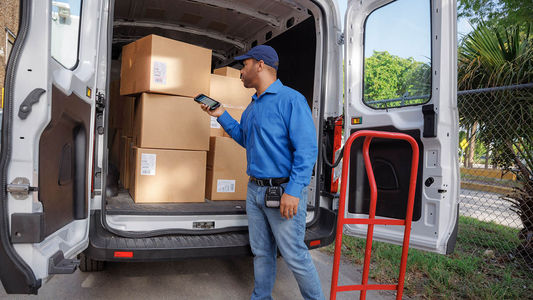Four ways mobile terminals emprove Logistics and Trasport

The logistics industry has witnessed a significant transformation over the past decade, largely driven by the proliferation of mobile technology.
Mobile terminals, in particular, have emerged as a critical component of modern logistics operations. These devices provide logistics companies with real-time visibility into their operations, enabling them to manage their fleets, monitor shipments, and streamline processes.
Real-time Tracking and Monitoring
With mobile devices in the hands of drivers and other logistics personnel, companies can monitor the location, status, and condition of their shipments in real-time. This enables them to respond quickly to any situation.
Improved Efficiency and Productivity
By providing real-time access to data and information, companies can reduce manual processes and paperwork, saving time and reducing errors. Mobile devices can also be used to automate processes such as inventory management, order fulfillment, and much more.
Enhanced Customer Experience
Mobile terminals help provide an exceptional customer experience by providing real-time updates on shipment status and delivery times, enabling companies to keep customers informed and up-to-date. Mobile devices can also be used to capture digital signatures and provide electronic proof of delivery, further enhancing the customer experience.
Cost Savings
Mobile terminals can also help logistics companies save costs. By streamlining processes, reducing manual labor, and increasing efficiency, companies can save on labor costs and reduce the likelihood of errors and delays. Mobile devices can also be used to track fuel consumption and vehicle maintenance, helping to reduce operational costs and improve fleet management.

